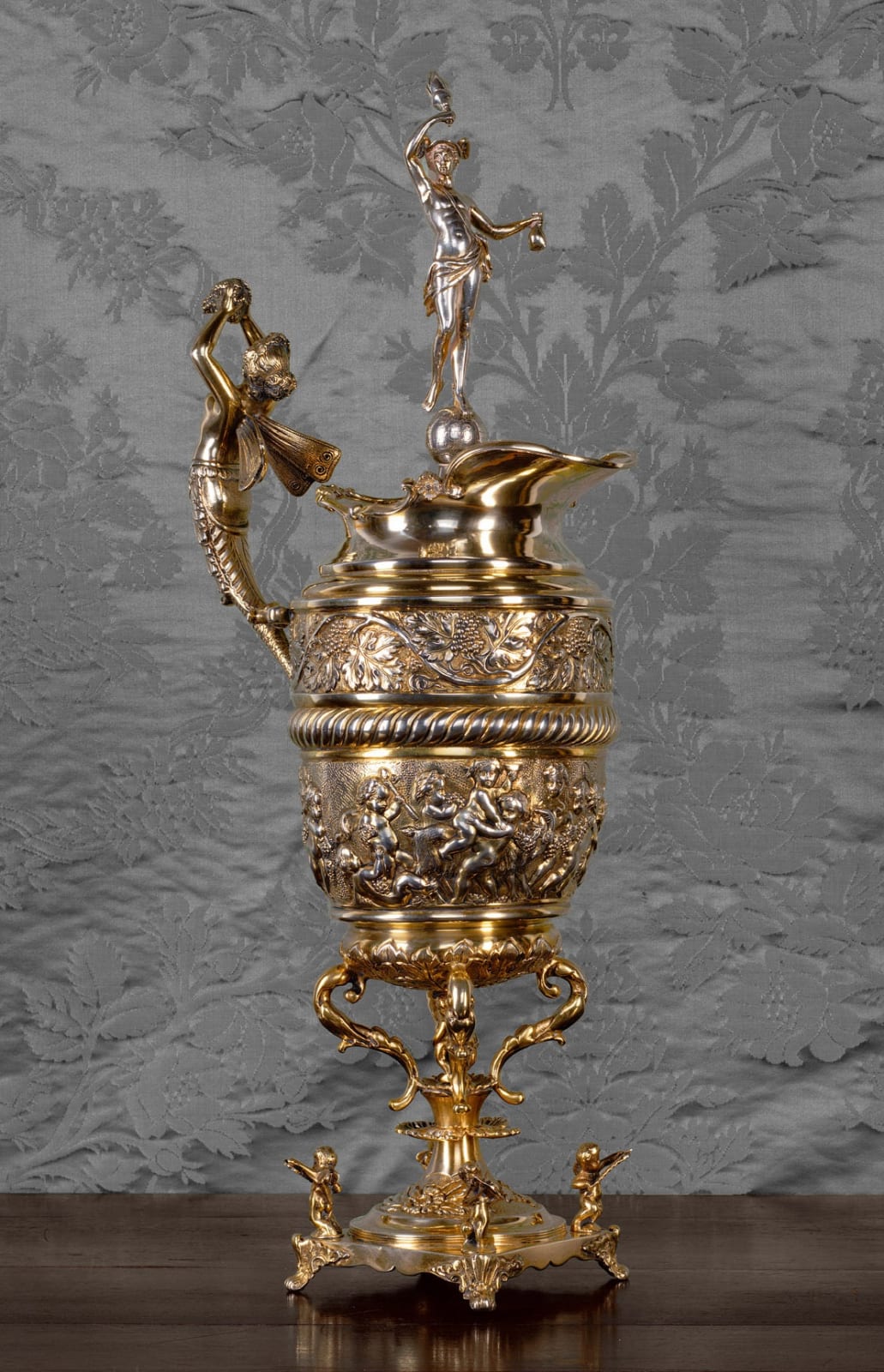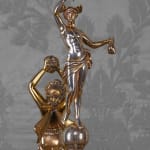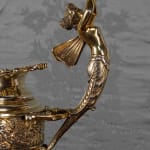Unknown
Further images
An unusual Continental nineteenth century silver-gilt ewer, bearing earlier English hallmarks, the body finely chased with Bacchanalian putti who play with a goat, holding grape vines and other Bacchic attributes, with a gadrooned band above and a fruiting vine leaf spray around the neck, the handle shaped as a beautiful winged female, personifying Psyche, who looks upward toward a bunch of grapes held in her hands, the lid of the ewer surmounted by the figure of Mercury, winged messenger of the gods, who wears his winged hat (petasus) and as the god of commerce he holds a purse in his left hand and also a flaming torch above in his right hand, as the patron of travellers he stands upon a globe showing the seas and continents, marked: Eurupa, Afrika, Asie and Nord Amerikana, the ewer on a foliate bowl on four scrolled acanthus-wrapped supports on a spreading circular plinth chased with flowers and foliage on a square base surmounted at each corner by a winged putto, on foliate feet
Continental, date circa 1860-90
Height 53 cm.
This handsome ewer typifies the great age of historicism during the second half of the nineteenth century, when past styles were studied, copied and adapted according to the imagination of the artist. At times only one historical style prevailed but more commonly, a number of them were combined into one piece, as we see here. This new eclectic synthesis of revived styles pervaded all aspects of the arts, not least that of the silver and goldsmith. This was due to a number of factors. One was the lowering of the price for silver so that now many new types of buyer desired to have a silver dinner or tea service, which up until the eighteenth century was the prerogative of aristocracy and royalty. In addition, the nineteenth century was one of a growing nostalgia for the past as well as a desire, especially amongst the rising middle classes, to acquire works that reflected their new found wealth.
This ewer is fascinating since, as noted, it combines many past historical styles within one work. For instance, the procession of Bacchic putti, who appear around the ewer’s body look back to designs by the French artist Claude Michel Clodion (1738–1814), whose friezes were also often reproduced on Louis XVI clock cases. While also reflecting Clodion’s designs, the four putti appearing on the ewer’s base, share more in common with Italian rather than French designs. While the ewer, with its surmounting figure of Mercury reflects seventeenth century German silver made at Augsburg, the overall form, with its outward facing female handle can be seen as an interpretation of a French style that evolved during the reign of Louis XIV under the influence of his court designer Jean Berain (1640–1711). At the same time, it also owes its design to the Renaissance silversmiths of which this particular style with the female herm handle is often named after the great sculptor and silversmith Benvenuto Cellini (1500-71). Concurrent with the above the female handle’s butterfly wings reflect works produced by the esteemed French Empire silversmith Jean-Baptiste Claude Odiot (1763-1850) as well as the Empire bronzier Claude Galle (1759-1815). The result is a wonderful synthesis of many past styles.





